The mobile world is changing, as not only is 5G coverage rapidly improving, but networks are looking to retire older 3G services.
This is true in the US, the UK and Australia, among other parts of the world, and it’s a move that’s likely to be a good thing in the long run, but if you’re still reliant on 3G coverage then you might understandably be concerned.
Below we’ll detail why this is happening, why it should ultimately be a good thing, how it might affect you, and what the timeline is for the shutting down of 3G networks.
When will 3G networks shut down?
Not every mobile network has yet confirmed when it will be switching 3G off, but some have.
In the US, AT&T plans to end 3G services in February (2022), Sprint on March 31 of this year, T-Mobile on July 1, and Verizon in December, which is quite a delay for Verizon as its original plan was to stop supporting 3G in 2019.
In the UK, EE plans to retire 3G by 2023 . The UK’s other networks haven’t revealed when they’ll switch 3G off, but they’ve all agreed to do so by 2033 , and we’d expect in reality they will do so much sooner.
In Australia, Telstra has said that it will shut down its 3G network in June 2024, and while no other operators have yet confirmed dates, we’d expect they all will over the coming years.
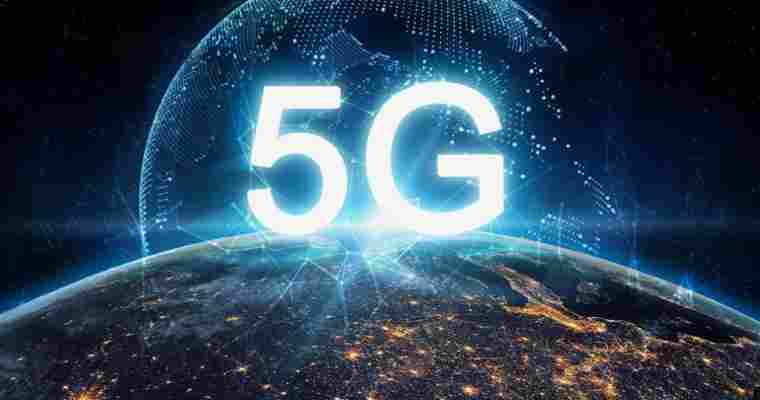
Why are networks doing this?
Mobile networks only have access to a limited supply of spectrum, which is what they use to transmit mobile signals. The more spectrum available for a given connectivity type (such as 3G, 4G or 5G) the better the service that can be offered in terms of coverage, reliability, and speed.
So by turning off 3G, networks can repurpose the spectrum that was used for this to bolster their 5G and 4G services.
Since 4G and particularly 5G are more modern, speedy services, this is desirable to do, and should improve the overall experience for customers.
Ending 3G services will also allow networks to retire dated, power-hungry equipment from the 3G era, reducing costs in the process. It’s a move that could also help pave the way to 6G .
What will this mean for 3G coverage and devices?
While it largely makes sense for carriers to end 3G services, this could be a problem for anyone who still relies on a 3G signal.
If you’re relying on one because that’s all your device supports, as it might be if you’re using a very old or basic phone, then unfortunately you’ll have to buy a new handset to stay connected. However, 4G and even 5G phones can be had very affordably, and we’ve got a guide to the best cheap phones to help you out.
It’s worth noting that some old Kindles will also lose internet access as a result of this, so this change could negatively affect a lot of gadgets, but mostly only older ones.
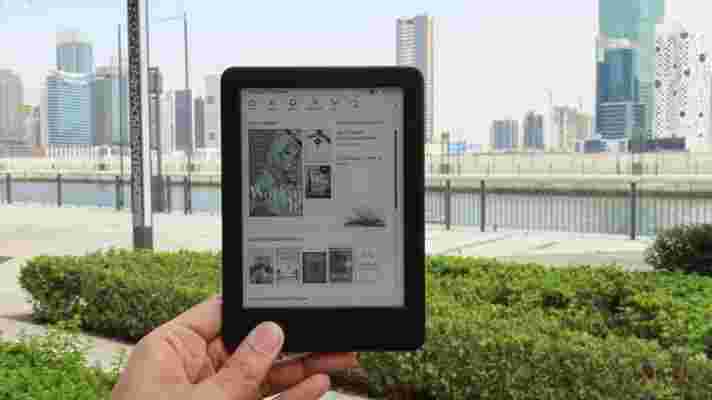
Many cars will be affected too, as a lot of those made between 2010 and 2021 use 3G for their smarter services, such as location and traffic data on navigation systems.
The good news is that some of these cars will be eligible for a software upgrade to solve this problem, and in some cases this can be carried out wirelessly.
Alternatively, if your car is affected you could consider either relying on your smartphone’s GPS mapping services, or buying a dedicated sat nav. However, this won’t fill in all the software gaps left by 3G’s absence, as if they're not updated some cars will also lose the ability to do things like use remote unlocking and remote start, or contact emergency services at the press of a button.
It’s worth checking now whether your car will be affected and what you can do if it is, especially in the US, where for example some Honda owners can get a free software update until February 22, 2022, after which the update costs $900. There’s less urgency with other manufacturers and in other countries, but it’s worth keeping on top of.
Where the 3G shutdown becomes an even bigger problem is if you live or work in an area that only gets 3G coverage, as you might go from that to having no coverage at all. This can be the case in some rural locations in particular.
However, as 4G and 5G networks grow, this is increasingly rare, and with the extra spectrum operators will gain for these technologies from the 3G shutoff, they should be in a position to more rapidly expand 4G and 5G coverage, filling in many of the coverage gaps.
Hopefully then a lack of coverage won’t affect many users, and those that are affected won’t be for long.
What about 2G and 4G?
The days of 2G and even 4G are also numbered, but both will be around for longer than 3G in some places. In the case of 2G that might seem strange since it’s an even older and more basic technology, but it also has lower power requirements, which makes it handy for certain Internet of Things (IoT) devices, especially those that require long battery life.
However, UK networks have committed to phasing out 2G by 2033 – which will be a problem for smart meters, as they’re reliant on 2G and 3G technology. The US meanwhile has found itself less dependent on 2G, with most carriers no longer offering it – the main holdout being T-Mobile, which plans to switch off 2G in December 2022.
In most cases 4G will be around for longer, but Sprint in the US plans to end this on June 30, 2022 – however this is only possible because its customers will still be able to access T-Mobile’s 4G network.
For most carriers it won’t be practical to shut 4G down until 5G is extremely widespread, and we may not see it happen until 6G is available too.
A collaborative brainstorming and mind mapping software | EdrawMind
Wondershare’s mind map software EdrawMind is an idea generator tool with multiple functions. It offers the ability to turn quick lists and notes into more substantial and constantly evolving maps and plans, with quite stunning looking results.
Once diagrams are created you can then, with the touch of a button, turn these mind maps into instant presentations to show classmates, students, colleagues, and clients what your ideas are all about.
You can also collaborate in real-time to generate maps together, and use it as a task and management tool, to analyze and structure complex ideas in a clear and visually arresting way.
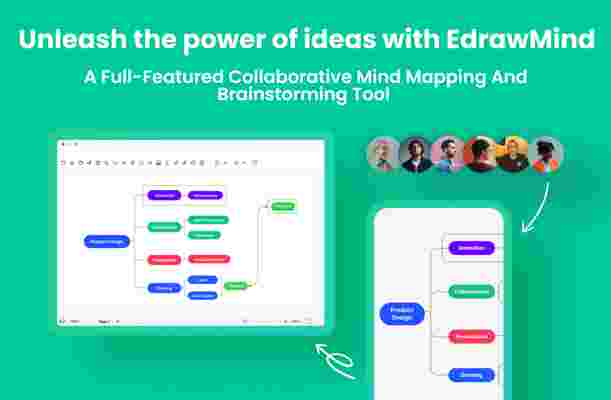
EdrawMind, previously MindMaster, is available for Windows, Mac, and Linux. It’s also available to download for Android and IOS devices from app stores, and a free-to-use web app exists, to try in your browser.
Individual plans range from either; semi-annual, billed every 6 months at $39; annual at $59, both with 1GB free cloud storage; and a one-time lifetime purchase currently priced at $145*, with 10GB free storage. An individual plan allows you to use the same account over multiple devices.
Business plans include; an annual subscription from $79; and from $129* for a one-time payment Perpetual licence. Business plans offer up to 3 years of free upgrades.
For those in education, tiered plans range from either; bi-annual; annual; and 6 month subscriptions, priced at $69, $49, and $35 accordingly. Savings on plans are made by bundling together other Wondershare apps like EdrawMax (an all-in-one diagramming tool), and EdrawInfo, which focuses on creating infographics. See all EdrawMind pricing plans.
The free web version is perfect for those wanting to dip their toe in, without committing to a download, and get used to how it works.
The desktop version is much richer in terms of features and is relatively inexpensive, which will be especially good news for freelancers and marketeers who’ll use it more often to present work and ideas to clients and colleagues.
Business plans offer the choice to add up to 20+ users for in-house multi-platform collaborations. A business account also allows access to the full features of EdrawMind with premium support.
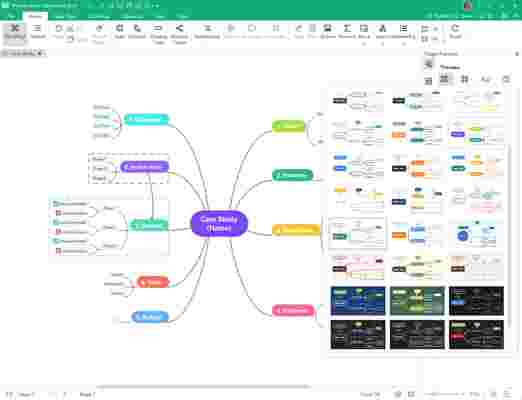
Features
Build and personalize maps
With a selection of 12 templates to start you off it’s quick and easy to get-to-grips with how EdrawMind works.
Some of the pre-installed structures include; tree; radial; fishbone; and circular mind map styles. Simply select a template, as you would with any other desk publishing program, and customize it to your liking.
Change everything from shapes, themes, and colors, and personalize it straight off the bat. It comes with a host of 700 clip-art images and the ability to upload and use your own imagery, too, so making visually stunning mind maps takes no time at all.
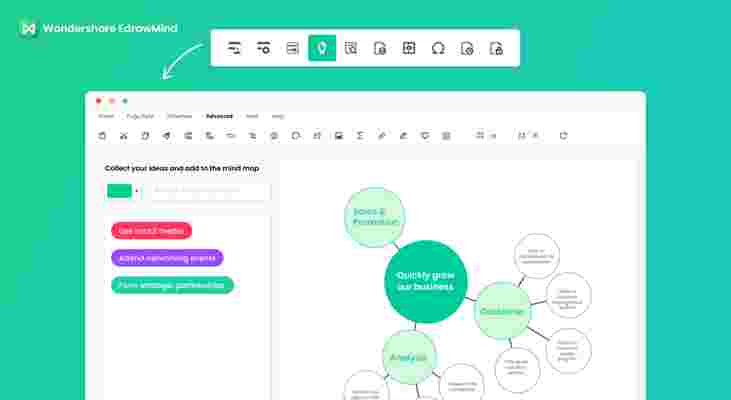
Brainstorming
This is a cool feature where you free-form ideas and suggestions with colleagues and the like.
By selecting the brainstorming tool you can allocate different colours to collaborators, and quickly gather ideas as a kind of quick-fire idea generator.
You generate the ideas on one side of the map, then drag and drop them into the main page which instantly forms everything into a cohesive structure you can then go on to edit more constructively.
Outline mode
This latest feature might have you wondering ‘what’s the point?’ But essentially it’s like note-taking before you generate a more visually effective structure.
The ability to generate and edit ideas, with headings and subheadings, into a cohesive linear outline is more than helpful. It’s actually a very intuitive way to ‘get things in order’, especially for those who find list-making a more productive way to outline ideas in the initial stages.
Presentation mode
Once you’ve outlined or brainstormed ideas, and generated them into a map that you’re happy with, this feature takes it to the next level. With a click of the button you can turn it into a very slick looking slideshow presentation.
By simply going into the slideshow menu and selecting ‘auto create’ all your main topics are generated as individual slides. Turning your subtopics into individual slides is also a click away.
You can then decide how you want your presentation to ‘flow’ by selecting either ‘branch’ or ‘traverse topics’, which both add their own dynamic quality to your presentation. Once you’re done structuring your presentation you can then save and export as a powerpoint or pdf file. You’re then ready to present in the forum of your choice.
Project and task management
Turning your mind map into a project management tool couldn’t be easier. After you’ve created something you’re happy with, again by outlining, brainstorming, and finally turning into a mind map, you can quickly turn your map into a Gantt chart using the Gantt chart advanced feature button.
In this mode it’s super easy to select all topics and add task info to them. After this, simply click the Gantt chart icon and all your info will be transferred into one.
This makes it extremely helpful to track progress and resource requirements, for example, whilst simultaneously sharing and collaborating with your team. The real-time online collaboration element to EdrawMind means you’ll all be up-to-date, all of the time.
Interface and In use
Anyone already familiar with MS Word or any other desktop publishing software, or app, will feel immediately at home here.
The user interface is instantly recognizable - from the opening home menu where you select a document type, to the menu ribbon running along the top once you’ve opened or created a file.
An editing and adjustments panel sits to the right of the screen where you can customize your content in terms of shapes, colors, fonts, and add images. As it was built for mind mapping alone though it is a much more stripped down and clean looking interface.
Similarly with the mobile apps, as you’d expect, it's even more paired down for ease of use and to look less cluttered. The adjustment panel sits at the bottom of the screen in this respect allowing for a more economic use of the screen.
Support
EdrawMind mind map software, available for Windows, macOS, Linux, Web, Android, and iOS, comes with a 30 day money-back guarantee.
E-tickets for online chat are available for any problems that arise, or for questions you don’t find in the FAQs. They usually get back to you within the day. It’s a case of filling in a form with the technicalities specific to any problem you may have.
In terms of community and help there is a burgeoning online mind mapping community where you can view, share, and like mind mapping creations. Online videos also abound, from introductory how-tos to more in depth editing tips.
As you might expect there are any number of mind mapping software alternatives out there, with plenty of free and freemium options. EdrawMind can be used free, via the app or browser, but is a more commercial i more professional service.
The ability to get to grips with EdrawMind quickly and easily, whether you’ve used mind map software before or not, means it’s great for beginners and seasoned users alike.
It’s intuitive to use and generates results instantly - which is what you want with mind maps. The last thing you’d need is to have to ‘learn’ complicated software in order to make notes.
Thankfully EdrawMind is clear, concise, and allows you to be creative with your efforts so you can go from ‘scribbling’ down notes to slick looking presentations within minutes.
Free download EdrawMind or use it online here .
Does listening to music make you run faster and train harder?
What are the best road running shoes ? How do I choose a running watch ? What should I eat before I run? All valid and important questions every new runner asks, but there’s likely another, more pressing question you want to know the answer to but have no idea who to ask: what music should you listen to?
Are beats-per-minute decisive to your performance? It’s the received wisdom, but is it actually true? Long runs are the perfect time to catch-up on podcasts and audiobooks, but is that a huge mistake?
It’s not just an important matter for runners. Keeping a beat is just as applicable to workouts and – with the rising popularity of waterproof headphones – also to swimming.
This is what science says about music and exercise. Are you ready to change your tune?
Is there a scientifically proven link between music and exercise?
Gyms, exercise classes and even sports arenas regularly have high tempo music pumping out and there are reasons for that. “The link between music and exercise centres around rhythm, tempo and the affective influence of music on the brain and body,” says Carolina Goncalves, a Superintendent Pharmacist at Pharmica , citing a psychological study published in 2020 that found high-tempo music (but not slow or medium-tempo music) to exert positive effects on physical activity. That study found such music not only led to people enjoying exercise, but increased their physical performance and their oxygen consumption (so, the efficiency of exercise) while reducing perceived exertion. But it had no effect on their heart rate, which might come as a surprise.
Just as importantly, music can help you enjoy exercise. “Music plays a central role in the overall exercise experience,” says Bryce Hastings, Head of Research at workout programs company Les Mills . “Having a sense of enjoyment – or even just appreciating the environment you’re working out in – has been identified as a key driver of long-term exercise adherence.” That’s crucial for motivating beginners, who can easily get turned off by the discomfort of exercise.

Can music really make exercise feel easier?
How long you have left to run, how fast you’re running and how hot or humid it is are all fears and feelings that music can help alleviate. “Music is reported to decrease the rate of perceived exertion, enabling users to exercise harder or for longer when compared to exercisers that were not listening to music,” says Goncalves. That’s backed-up by a study of 41 athletes published in 2013 that found that music greatly decreases the perceived exertion during strenuous activity.
“Our research on immersive fitness shows that having the right combination of music and visuals can drive intensity while reducing perceived effort,” says Hastings. “So you end up working harder and getting better results, without even realising because you’re having more fun.”
Can music affect your mood when exercising?
Music is also an effective means of mood regulation, which is crucial when exercising. “It has a profound effect on the psyche and can be used as a stimulant or relaxant, both before or during exercise,” said Goncalves.
A study published in 2016 found that carefully selected music improves energy efficiency and exercise performance, it elicits the release of feel good hormones, and it primes the body for action. Crucially, music also evokes positive moods and memories ... and diverts our attention away from unpleasant experiences such as fatigue, pain and the downright boredom of running around the local park again .

Can music increase physical performance?
If your mind and body are primed and ready for action – with the aid of music – then you can perform better. “Music can influence how we feel and think, and in turn have an ergogenic (performance-enhancing) effect on both cognitive and physiological aspects of exercise performance,” said Goncalves.
So-called smart AI-powered music workouts can even give an athlete a physical advantage, according to a paper published in 2016 , which concludes that race organizers should consider banning headphones for that reason alone (many do simply because of the dangers of traffic).
“Music may even be enhanced so that music becomes a sort of a 'personalized, legal drug’ ... it may be impossible to fully comprehend the power of the music playlist used by an individual runner during a race.”
Do beats-per-minute make any difference?
According to a paper published in 2011 motivational music has a strong rhythm and a tempo of over 120 beats-per-minute (BPM) and is typically energetic and upbeat, while some music is neutral and elicits no motivational response.
But it depends on what you’re doing. “Music that helps drive the required cadence of an activity like running or cycling helps us to maintain a regular and consistent tempo,” says Hastings, something demonstrated in a study published in 2012 in which cyclists used 7% less oxygen when cycling to the beat of a track.
However, BPM is far less important to HIIT training. “The extreme level of intensity and the drive to push yourself as hard as possible means you’ll self-select the pace, rather than be influenced by the beat of the music,” says Hastings. In this case it helps to have a motivational instructor rather than motivational music.
Another important factor is the synchronicity between music tempo and the tempo of movement of the exercise. Here it’s a face-off between synchronous music (which is in sync with the tempo of the exerciser) and asynchronous music (where the music is not in sync with the exerciser). “Both synchronous and asynchronous music is reported to improve exercise performance, with synchronous music offering a greater improvement in performance,” said Goncalves, citing a paper published in 2006 on the effect of music on 400 meter sprinters. So any music is better than no music.

Does music have to be loud to be motivating?
But how loud does it have to be? “Musical volume is associated with perceived music usefulness, with individuals opting to increase music volume when the exercise intensity significantly increases,” said Goncalves, citing a paper published in 2014 . Loud music also appears to help maintain motivation.
What about podcasts and audiobooks?
If you’re not particularly into high-tempo music then the good news is that it’s okay to listen to podcasts and audiobooks while exercising. “Due to the absence of an energetic, consistent beat or rhythm, they don’t necessarily offer the same motivational effect music does,” says Goncalves.
However, crucially, this is about what suits you, not what suits the herd. “Individual differences are significant when it comes to music and its influence on performance, so depending on the exercise and the person [listening to podcasts or audiobooks] may help with performance as well as make the activity or exercise more enjoyable.”
For example, a study published in 2016 found that listening to personally preferred music increases exercise intensity.
Why to exercise in silence
There may be some science behind it, but there are practical and legal reasons not to listen to music. Running and keeping on running is about your mental state and music – as well as podcasts and audiobooks – is a distraction.
If you’re obsessed with improving your physical performance and endurance then some runners will advise you to concentrate on your breathing, something that music can distract you from focusing on. Besides, more and more organized races ban the use of headphones, typically when they use roads that aren’t 100% closed to traffic. So if you intend to enter races then you should be comfortable with running in silence (or with only the noise of the crowd).
You don’t have to listen to any music. You don’t have to listen to anything. In fact, elite runners tend not to listen to anything at all. However, when you’re just starting out some kind of distraction can be a good idea. High tempo music can help some people improve their performance, but do whatever works for you.
Whatever songs you love to exercise to , it’s more important to exercise and keep exercising than what you listen to. Give every option a try – from high-tempo Spotify playlists to classic audiobooks – because sound can be a powerful resource that can make a difference to your health, your wellbeing and your motivation.
This article is part of TechRadar's Get Fit in 2022 series – a collection of ideas and guides to help get your new year's health goals off to the right start, whatever your current level of fitness.